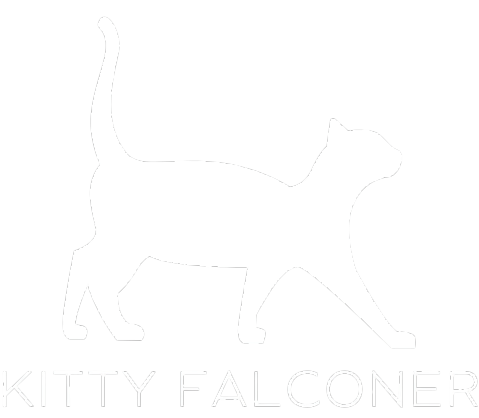This One Weird Trick Will Help Sell Your Book
This book is your best work yet.
You’ve spent months, years, living intimately with the people in your head. Obsessing over word choice. Teasing out meaning. Polishing the whole thing to a high shine. You’re proud of it, more so than anything you’re written before. And you feel every nuance of it in the very depths of your soul.
Now it’s time for the next step. Maybe you want to start querying and find an agent. Maybe you’ve got a book deal, and your agent wants a brilliant, compelling option proposal to send to your editor. Maybe you’re an indie author, marketing your work directly to readers.
Whatever the case, the news is the same.
You have to start thinking like a copywriter.
(No! No! Don’t make me!)
If that sounds cynical, it isn’t! Whether you’re writing a query, a pitch or the dreaded back-cover copy, you want to trigger the same response:
WHAT. THIS IS AMAZING. I MUST FIND OUT WHAT HAPPENS NEXT.
In other words, you need to create urgency. You need to make your reader feel that they must get hold of your specific book, right now this minute. You need to sell it to them, and you need to do so really, really fast.
Here’s why:
Literary agents can get hundreds of queries every week – which they deal with when they’re NOT working for their active clients.
Editors are extremely busy, too. I’m tired just reading this ‘day in the life’ feature.
Trying to reach readers directly? You’re competing with the millions of new books that are published every year.
In other words, your novel can be beautiful. It can be bestselling, prize-winning, genre-defining stuff. But readers, agents and editors exist in a crowded and noisy marketplace. You have a few seconds – at most – to grab and keep their attention.
Thinking like a copywriter doesn’t mean selling out. It’s not about betraying your vision, or dumbing down your work. It’s actually your best shot at finding your book the audience it deserves.
But if you’ve spent a long time working on that same book, it can be challenging to step back and gain the distance you need to boil it all down into tight, effective copy. That’s why so many authors struggle to sum up their own work.
Good news! There’s a very old, tried-and-tested copywriting trick that can help you do just that. And it’s incredibly straightforward.
Fascinations: the copywriter’s secret weapon
Back in the 1970s, an eccentric genius called Mel Martin put his stamp on the marketing world forever. His strength was writing short, pungent lines of copy that presented the reader with a simple choice: opt in or miss out. These “bullets” were so effective at hooking people that they came to be called fascinations.
Mel Martin died in 1993, but his magic formula lives on. Recognise this kind of thing?
This simple habit can relieve migraines for good
What your accountant wishes you knew … and the IRS wants to keep secret
The five rookie mistakes that stop agents from requesting your manuscript
Stuck in the bunker? Here’s why your short game is letting you down
Six secret gems on the shores of Lake Garda: our exclusive insider tips (subscribers only!)
When these attention-grabbing headlines are just a vessel for spam, misinformation or malware, they’re called clickbait and they’re a complete scourge. But if they actually direct the visitor to an article/video/newsletter full of useful accounting tips/golf advice/travel info? That’s the definition of a fascination.
What makes fascinations so effective?
Fascinations are a brilliant sales tool because they play on the reader’s emotions. A smart copywriter will target a specific audience (golfers, aspiring novelists, travel enthusiasts) and find their pain point: the thing that bothers them most (bunker shots, rejections, overtourism). Then they’ll offer the promise of relief … if you’ll take just one action (click through, sign up, purchase).
Bob was not convinced that this one weird trick would melt his belly fat.
When you’re setting out to pitch or market your book, you’re facing the same three steps as any commercial copywriter:
Identify your audience: For example, if you’re querying, you might want to target agents based in the UK who are open to queries and represent contemporary sports romance.
Find out what they want: The first thing any agent wants is a well-written, highly readable book they can pitch to editors in a few punchy words: do the same in your query, and you’re already helping. They also really, really want you to stick to the query guidelines they lay out. Some agents also provide manuscript wishlists (MSWLs) with more detailed information about what they’re hoping to see. Does their MSWL say “Barbenheimer on ice?” Great news for your high-concept, genre-busting, hockey-themed dystopian spicy romp.
Lure them in with the answer to all their desires. (That’s your book, by the way. It’s always your book.)
Now, clearly you’re not going to write to agents and promise them that this one weird psychological thriller will heal your gut microbiome. But Mel Martin’s fascination formula can still be incredibly useful. Elevator pitches, cover taglines, email openings … a concise, hook-y line of copy is your book’s best advocate.
Ready to see how it’s done?
The beauty of fascinations is that you can take lots of different approaches. It all depends on your audience, their pain point, and the particular kind of relief your book has to offer.
Here are just three ways you can adapt Mel Martin’s fascination formula to connect your novel with its ideal readership.
Create unbearable suspense
Suspense isn’t just for thrillers. The stakes may be more or less drastic, the vibe cosier or more intense, but any commercial, plot-driven story runs on suspense. That sense of uncertainty is what keeps people turning the pages. They want to find out what happens next.
That’s also true of fascinations. After all, people click on those headlines to relieve their suspense: to find out the secret or discover the one tip that will change everything. Creating FOMO is a highly effective marketing strategy. So how do you do it?
First, ask yourself: What basic itch does my story scratch? What is the primary mystery, conflict or challenge that is set up at the start and only resolved at the end? That’s the bait you’ll use to hook your reader.
A suspense-driven fascination might look like the classic psych thriller tagline. But it could also be about racing against the clock, saving yourself or others, or making an urgent choice: whether that’s disabling the doomsday device before the world implodes, escaping from an abusive or toxic situation, or meeting a book deadline that’s more than just professional.
The key thing is to plant a question in your reader’s mind – one they’ll only answer by reading your book.
Here are a few great examples:
Charlotte Duckworth’s Connie has such a compelling tagline, I preordered the book instantly.
Stephanie Wrobel’s query letter for Darling Rose Gold opens with a great hook and sustains that tension all the way through.
Jordan Ifueko’s Raybearer has a goosebump-inducing cover tagline and an enticing back-cover blurb: check it out!
Foster irresistible intrigue
Curiosity is a powerful impulse. That’s why fascinations (and clickbait!) so often promise some kind of inside scoop. You’ll never guess what [obscure 1980s child actor] looks like now! Secrets of Hollywood power couples – number 3 will shock you!
If your book does something different, you can lead with that to create intrigue and seduce your target into reading on. Maybe you’ve written a gender-flipped take on a classic novel, or a dark romance about a beloved storybook villain, or maybe your setup is just weird and breathtaking and new. Maybe you’ve achieved a mashup that nobody even dared try before. (Jane Eyre in space, anyone?)
Putting that shocking or surprising concept right up front can hook your audience into reading your book … just to find out what the hell it’s all about.
Here are some examples that do precisely that:
Mike Chen’s query letter for Here and Now and Then has an incredible opening line.
Frances White lures us aboard the Voyage of the Damned.
Tease an escape
Remember those six secret gems on the shores of Lake Garda (subscribers only!)?
Of the readers who click on a headline like that, chances are that not all of them – in fact, very few – have the money or the time for a luxury holiday in one of the most expensive parts of Italy. Sometimes, what people long for is an escape: a chance to be another person for a moment, somewhere else.
It’s why many of us read. And let’s be honest – it’s why some of us write, too. Believe me, I know: I wrote an entire novel because people kept asking me how my “Italian adventures” were going.
Your novel doesn’t have to be set in a Tuscan vineyard. It could be a Greek island, or the Great Northern Peninsula, or really anywhere your target readers aren’t likely to be. Or perhaps it offers a different escape: an immersion in another time period, a taste of rich-people problems.
By leading with that escapist element, you can really make your reader’s mouth water.
Just have a look at these:
Ali Rosen offers delicious food, second-chance love and a great big wedding – plus a special extra for her newsletter subscribers.
T J Klune promises the ultimate escape: a cosy, therapeutic vision of life after death.
Selling your book is simpler than you think
But that doesn’t mean it’s easy, emotionally or intellectually. Writing strong copy is all about getting down to the bare essentials, and when it comes to your own work, that can be especially hard to do.
Writing a book requires sensitivity, insight and a whole lot of care. But when you’re selling it, you have to be tough, concise and a little bit shameless.
No matter how much you love your story, you have to be prepared to treat it like a product. You have to forget you’re an author, and start thinking like a marketer. With so much competition out there, it’s the only way to give your book a chance.
Making that shift can be incredibly challenging – even painful. As an author myself, I understand. That’s why all my author website design packages include a full content review. With my copywriter hat on, I’ll review all your website copy to make extra sure it’s clean, sharp and compelling.


